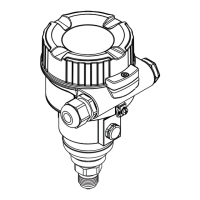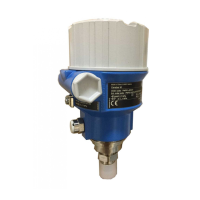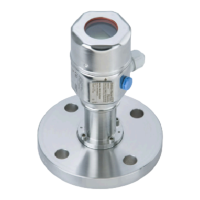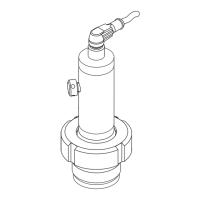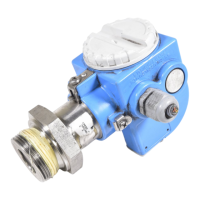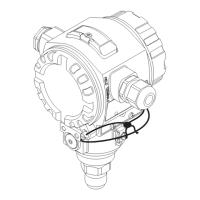Cerabar M PMC51, PMP51, PMP55
10 Endress+Hauser
Measuring principle
Ceramic process isolating diaphragm used in PMC51 (Ceraphire
®
)
A0020465
1 Air pressure (gauge pressure sensors)
2 Ceramic substrate
3 Electrodes
4 Ceramic process isolating diaphragm
The ceramic sensor is a dry sensor, i.e. the process pressure acts directly on the robust ceramic
process isolating diaphragm and deflects it. A pressure-dependent change in capacitance is
measured at the electrodes of the ceramic substrate and the process isolating diaphragm. The
measuring range is determined by the thickness of the ceramic process isolating diaphragm.
Advantages:
• Guaranteed overload resistance up to 40 times the nominal pressure
• Thanks to ultrapure 99.9% ceramic (Ceraphire
®
, see also "www.endress.com/ceraphire")
• extremely high chemical stability, comparable with Alloy C
• high mechanical stability
• Can be used in absolute vacuum
Metallic process isolating diaphragm used in PMP51 and PMP55
A0016448
1 Silicon measuring element, substrate
2 Wheatstone bridge
3 Channel with fill fluid
4 Metallic process isolating diaphragm
PMP51
The operating pressure deflects the process isolating diaphragm and a fill fluid transfers the pressure
to a resistance bridge (semiconductor technology). The pressure-dependent change in the bridge
output voltage is measured and evaluated.
Advantages:
• Can be used for process pressure up to 400 bar (6 000 psi)
• High long-term stability
• Guaranteed overload resistance up to 4 times the nominal pressure
• Significantly less thermal effect compared to diaphragm seal systems

